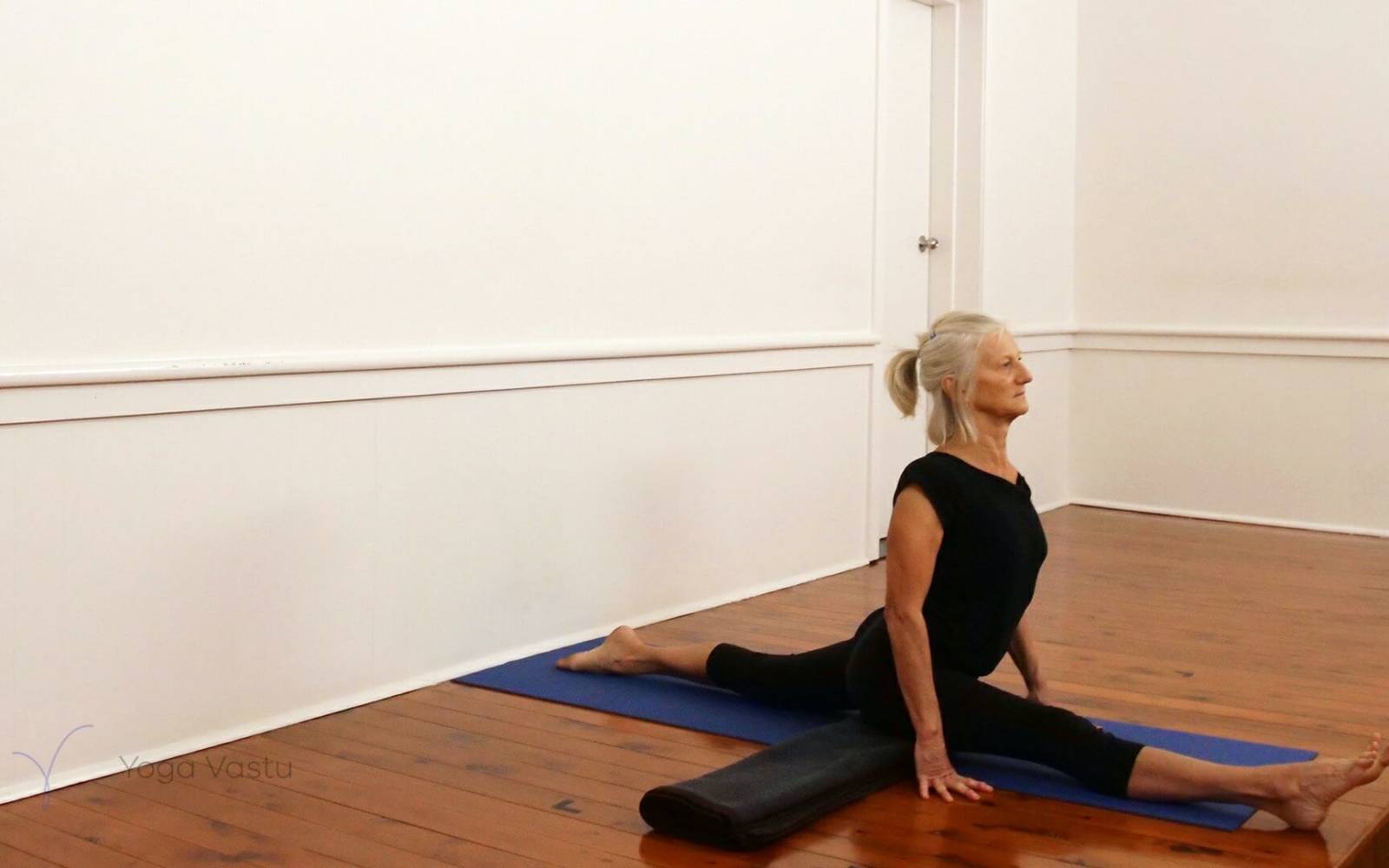How to perform Monkey Pose
A good way to start is in the kneeling position. Place your hands on the floor in front of you, shoulder-width apart. Bring the right leg forward and stretch it out between the hands. Lower your buttocks down to capacity (onto the floor or onto support). Extend upwards through your chest and crown of your head. Change sides.
What is Hanumanasana?
In western culture, this pose is most commonly referred to as ‘front splits,’ or simply ‘the splits.’ The Sanskrit name, Hanumanasana, translated into English as Monkey Pose, is a reference to the Hindu god Hanuman (who resembled a monkey) and the leap he made from mainland India to Lanka island (modern-day Sri Lanka).
This is an advanced pose that requires a good deal of hamstring flexibility and groin mobility but it can be practised at fairly early stages as long as the student uses adequate support. There are several ways of entering this pose. You can start in the kneeling position or in one of the standing forward bends, such as Adho Mukha Svanasana (Dog Pose) or Parsvottanasana (Pyramid Pose).
From the kneeling position, you bring your hands forward onto the mat, shoulder-distance apart, and stretch one leg out in-between your hands. From the standing forward bend position, you do the same. Then you start to bring your buttocks down towards the floor. At this point, you can place support under your buttocks: this can be in the form of a bolster, blanket, or block. If you need more height, you can also place your hands on a couple of blocks or even chairs. Go to a point where you feel a decent stretch but make sure not to overdo it as this can cause injury.
Once you’ve reached a point that feels mildly challenging yet not uncomfortable, start to lift through your side chest, releasing the buttocks down further if possible. Remember: the more you lift through your chest, the more you will be able to release downwards through your groins. Keep your spine straight and extend through the crown of your head.
When to use Hanumanasana?
Hanumanasana comes nicely after forward bend sessions when the hamstrings are most open. However, it can also be incorporated at the end of an intense backbend session that contained such poses are Eka Pada Rajakapotasana, Urdhva Dhanurasana, or one of the Viparita Dandasana variations, all of which are directed, amongst other things, towards stretching the hamstrings.
Monkey Pose offers students an excellent way of evening out their pelvis, groins, and hamstrings — an invaluable thing after both forward bend and backbend sessions, at the end of which there is a tendency to feel a slight disbalance in the opening of the leg muscles. For example, after forward bends, we tend to feel like our front leg is more open, whereas after backbends the feeling is the opposite.
Seeing as Hanumanasana gives us such an intense stretch that is moreover asymmetrical, it gives us the perfect opportunity to explore the practical meaning of Guruji’s advice, “Let the good side teach the more reluctant side.”

